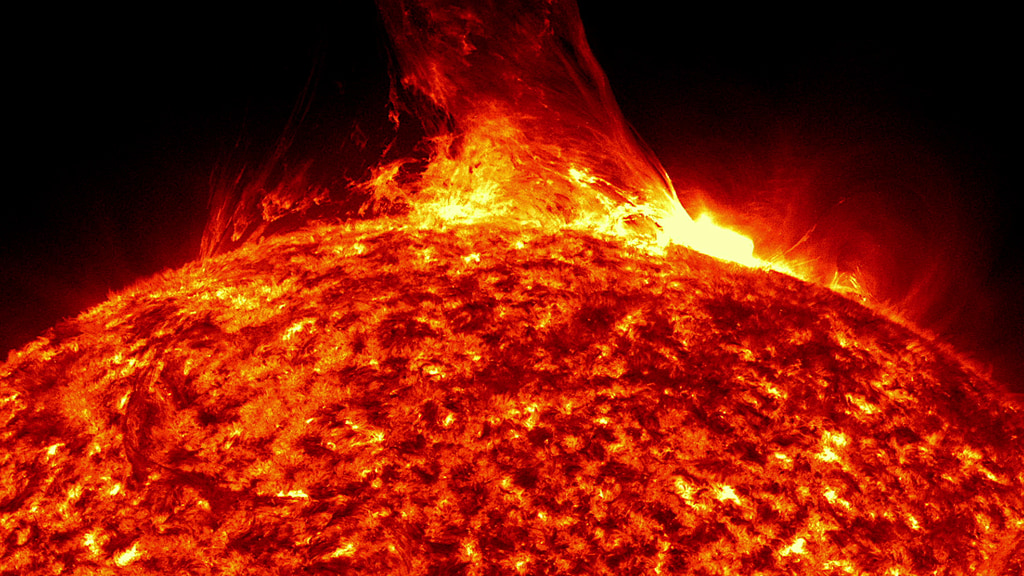Concert videos
These videos are designed to accompany live orchestral performances. For more information and inquiries about their use, please contact Scott Wiessinger at scott.wiessinger@nasa.gov.
This video contains imagery of the Sun from the Solar Dynamics Observatory (SDO). Much of this footage is in ultraviolet light and shows the hot atmosphere of the Sun, called the corona. It is edited to accompany Carl Nielsen's Helios Overture.
This video uses astrophysics images, visualizations and animations that show objects beyond our solar system. It is designed to accompany an Apollo 13 medley, arranged by John Moss.
The video starts with images of galaxies and nebulas, some of the largest objects in the universe, and ones that we can get detailed pictures of. Most of these images are taken in visible and infrared light. Then it shows animations of stars. Two massive stars in a binary orbit, with their stellar winds blasting each other, neutron stars which pack more than the Sun’s mass into a sphere the size of a city. It moves on to show simulations of binary supermassive black holes. These are pairs of black holes that orbit each other, each one with millions to billions of times the sun’s mass. They are visible because of the disks of hot, glowing gas that orbits them, called accretion disks. They create gravitational waves, and distort the light coming from each-other’s accretion disks. One simulation shows the gravitational waves, another shows how the light becomes warped, and another one simulates the complex behavior of the gas as the two black holes get closer and their accretion disks merge. Finally, the video shows exoplanets, which are planets orbiting other stars. They are often too distant to see even as a point of light, but scientists can learn a lot about their size and likely qualities by studying the behavior of the star they orbit. Artists take that information and create animations and illustrations representing our best guess of what they look like. A great deal of careful research and science goes into all these visuals. Some are created by the scientists themselves, and others are made by animators and visualizers working closely with the scientists.
Credits
Please give credit for this item to:
NASA's Goddard Space Flight Center
-
Producer
- Scott Wiessinger (KBR Wyle Services, LLC)
-
Editor
- Scott Wiessinger (KBR Wyle Services, LLC)
-
Visualizers
- Tom Bridgman (Global Science and Technology, Inc.)
- Jeremy Schnittman (NASA/GSFC)
- Scott Noble (NASA/GSFC)
-
Animators
- Chris Smith (KBR Wyle Services, LLC)
- Brian Monroe (USRA)
Release date
This page was originally published on Wednesday, April 6, 2022.
This page was last updated on Tuesday, August 15, 2023 at 4:23 PM EDT.
